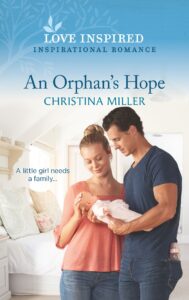by Christina Miller, @CLMillerbooks

Don’t you love the excitement of opening a new novel?
I like to let anticipation build for a few days after a trip to the bookstore, catching an occasional glimpse of my new read on the kitchen table or my to-be-read pile next to my reading chair. As a romance reader, I find that my tried-and-true favorite authors almost always deliver that swell of emotion I long for in the pages of the book.
But sometimes the emotions fall flat, and as a result, the book lacks those satisfying heart tugs. When that happens, the book’s intriguing plot, flawless character arc, and grand theme don’t matter. If the author hasn’t evoked emotion in me, I probably won’t buy her books again. (Unless her next book features a dog. That could be a deal changer.)
As a romance author, I want to evoke emotion in my books. Therefore, after I’ve figured out the characters’ SEQs, plotted the middle to keep it from sagging, and formulated a satisfying ending, it’s time to bring words—and emotions—to the page. Surprisingly enough, using rhetorical devices is one way to help us ramp up the characters’ feelings and thereby deliver a story that will bring readers back for more.
Rhetorical devices work by forcing us to take a deeper look into the emotion on the page. Rather than merely stating how the character feels, these little gems can pull heartstrings by making us isolate the exact emotion instead of settling for a vague one. We can use them to show why the characters feel the way they do. As a bonus, they can also make our writing more beautiful.
The key to success here is to use these techniques in places where we want the characters’ emotions to run high. These are the lines we want the reader to remember long after she has finished the book.
So let’s dive into my two favorite rhetorical devices, anaphora and cadence, the techniques I use most often.
Anaphora: This is the intentional repeating of a word or phrase at the beginning of multiple phrases or sentences. I typically use it three times, but I have used it four. But do use three or more. Use less than that and it looks like a mistake. (If your critique partners don’t understand anaphora, they might flag them all as errors anyway. Then we just bless their hearts and move on.) Also, if I use them in separate sentences (either complete or incomplete), I often also write the third one as a paragraph of its own. Here are some examples:

Jase tried to imagine life at Rosewood without Erin and her kind heart that made sure everybody around her had everything they needed. Without her encouraging, sweet smile.
Without her kiss.
(from my February, 2022 Love Inspired release, An Orphan’s Hope.)
Jase—the sweet little boy who’d wept for days when his father left them without a word, without a hint he was leaving, without a goodbye or a handshake or a hug.
(from my August, 2022 Love Inspired release, Embracing His Past. Jase plays a big part in it, as well. And apparently, I’m on a “without” kick here.)
Cadence: I admit I’ve never heard of cadence used as a rhetorical device, but I use it as one, and I believe it’s one of the most powerful devices we can employ to strengthen emotions and make our writing more beautiful. Cadence in writing is the same as cadence in music. As a musician, I can tell you that proper cadence makes a song, whereas improper cadence breaks it. Cadence does that for the emotions in our books as well. The rules of cadence are simple. In an emotional scene, choose three sentences or phrases in a row. Count the number of syllables in each sentence. Then revise to have an equally increasing or decreasing number of syllables in each. Here’s our anaphora sentence from above again. Notice the cadence:
Jase—the sweet little boy who’d wept for days when his father left them without a word, without a hint he was leaving, without a goodbye or a handshake or a hug.
- Phrase one: “without a word”: 4 syllables
- Phrase two: “without a hint he was leaving”: 8 syllables
- Phrase three: “without a goodbye or a handshake or a hug”: 12 syllables
We increase the number of syllables by four with each phrase.
The following example is from my June, 2021 Love Inspired release, Finding His Family, and it too uses both cadence and anaphora:
The old familiar tone had crept back into his voice—the one that always gave him away. It meant that the impossible had looked him in the eye and challenged him. It meant he knew it couldn’t be done, no matter how he tried.
It meant he intended to do it anyway.
- Sentence one: “It meant that the impossible had looked him in the eye and challenged him.” 18 syllables
- Sentence two: “It meant he knew it couldn’t be done, no matter how he tried.” 15 syllables
- Sentence three: “It meant he intended to do it anyway.” 12 syllables
We decrease the number of syllables by three in each sentence.
So those are my two favorite rhetorical devices. How about you? Do you have a favorite rhetorical device? How do you use it?
Twice left at the altar, preacher Jase Armstrong avoids commitment at all costs–until he inherits his cousin’s three-day-old baby. Pushing him further out of his comfort zone is Erin Tucker, the nurse for his live-in octogenarian boss, and her lessons on caring for an infant. But can Jase open his heart enough to see the family forming around him?

Author Christina Miller’s idea of a perfect day involves a southern beach, a stack of books, and a glass of sweet tea. Years ago, she left her job as an RN to work in the church her husband pastors. She also became a writer—and sometimes she gets to write on the beach. Christina is a Love Inspired author, Bethany Global University (Bloomington, Minnesota) graduate with degrees in theology and missiology, church secretary, worship leader, and children’s ministry teacher. When she doesn’t have her nose in a book or her toes in the sand, you might catch her visiting an antebellum mansion, opening her early-American home for Dinner Church, or teaching at a women’s conference. Christina lives on her family farm with her husband of thirty-three years.

